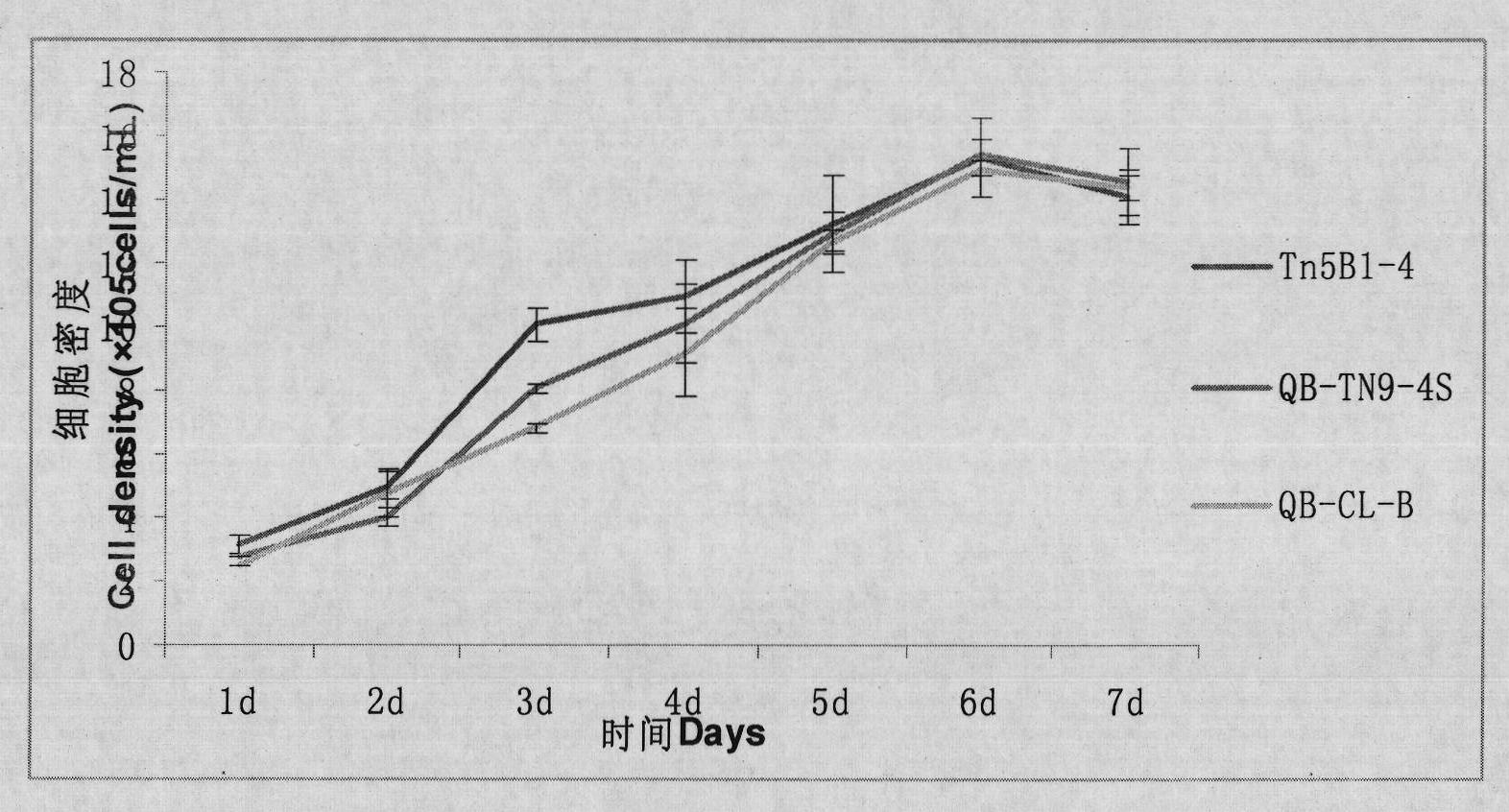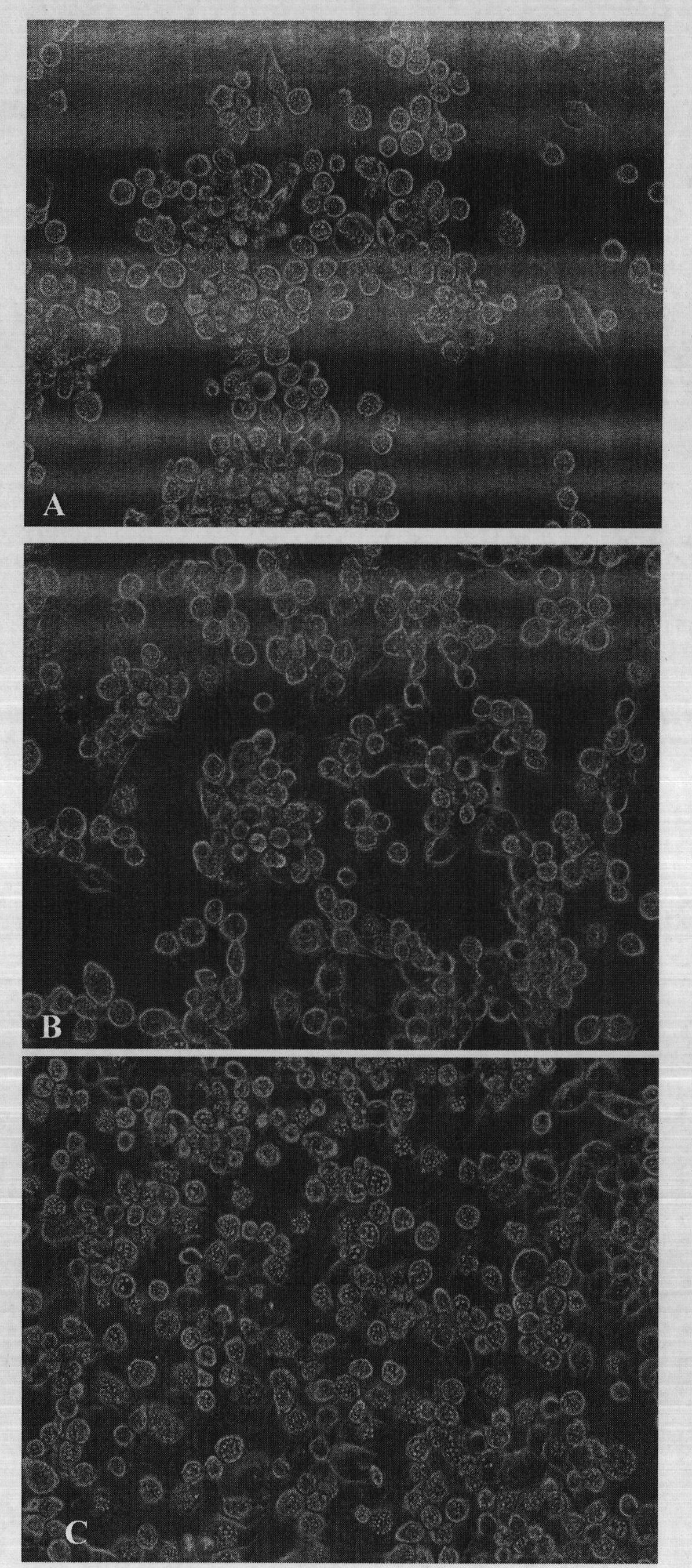Clonal strain of cabbage looper cell line and application thereof
A technology of trichoplusiasis and cell lines, applied in the field of insect cell line clones, can solve the problems of cell agglomeration, unsuitable virus and recombinant protein production, etc., and achieve the effect of reducing production costs
- Summary
- Abstract
- Description
- Claims
- Application Information
AI Technical Summary
Problems solved by technology
Method used
Image
Examples
Embodiment 1
[0023] Example 1 Isolation and identification of cell clone QB-TN9-4S-CL-B (QB-CL-B)
[0024]1.1 Establishment of Trichoplusia cell line QB-TN9-4S: according to the method of Ming-Juan Meng (2008, Insect Science, 15: 423-428), fresh eggs of Trichoplusia populations cultured in the laboratory were obtained, respectively After surface disinfection with 10% sodium hypochlorite and 75% alcohol for 5 minutes and washing twice with TNM-FH (GIBCO, USA) medium, eggs were transferred to a cell strainer (BD Falcon, USA) and the strainer Put it into a plate with 10ml medium, grind the cells fully, dilute the egg tissue filtrate to different concentrations, and distribute it in 25cm 2 culture flask (Corning, New York, USA). Incubate at 28°C. Half of the medium was replaced with fresh medium every 2 weeks. After 5 months, when the formed cells covered the bottom of the bottle, the first subculture was carried out. After the cells grew stably, they were subcultured twice a week.
[0025...
PUM
 Login to View More
Login to View More Abstract
Description
Claims
Application Information
 Login to View More
Login to View More - R&D
- Intellectual Property
- Life Sciences
- Materials
- Tech Scout
- Unparalleled Data Quality
- Higher Quality Content
- 60% Fewer Hallucinations
Browse by: Latest US Patents, China's latest patents, Technical Efficacy Thesaurus, Application Domain, Technology Topic, Popular Technical Reports.
© 2025 PatSnap. All rights reserved.Legal|Privacy policy|Modern Slavery Act Transparency Statement|Sitemap|About US| Contact US: help@patsnap.com



